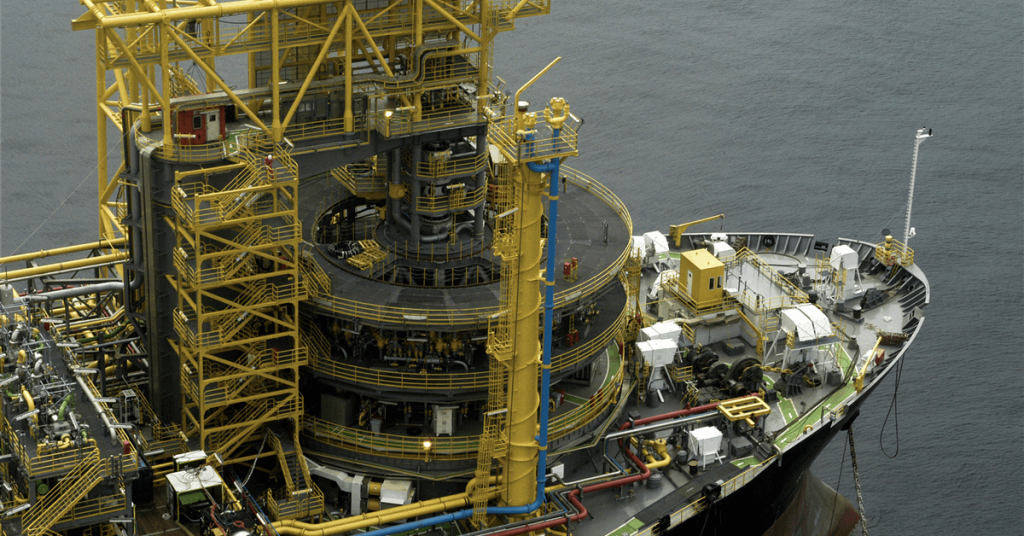Santos Ltd said Monday Darwin LNG’s new source field is now producing natural gas and that the liquefaction facility had received reauthorization from Australia’s Northern Territory.
“Santos is also pleased to report that all six wells drilled in the Barossa gas field have intersected excellent reservoir quality”, the Australian company said in a press release. “Testing has been completed on five of the six wells, demonstrating outstanding flow capacity that exceeds pre-drill estimates, with expected average potential well deliverability of around 300 million standard cubic feet per day.
“This success underscores the robust capacity of the Barossa field to sustain long-term production.
“Further, the Northern Territory Environment Protection Authority has renewed the Environment Protection License for Darwin LNG, commencing 19 September 2025. This paves the way for first gas into, and start-up of, the Darwin LNG plant”.
The Darwin LNG life extension project can produce up to about 3.7 million metric tons a year of liquefied natural gas (LNG), according to Santos.
Darwin LNG’s previous source field, Timor-Leste’s Bayu-Undan, stopped exporting gas to the liquefaction facility late 2023 due to depletion, though Santos said 2024 Bayu-Undan would continue sending gas to the Northern Territory until the end of that year. In its quarterly report July 16, 2025, Santos confirmed Bayu-Undan ceased production May 2025.
The new source field, Barossa, extends Darwin LNG’s production life by two decades, according to Santos. Santos plans to drill up to eight subsea wells.
Barossa has a floating production, storage and offloading vessel (FPSO) with a gas handling capacity of 850 million standard cubic feet a day and a condensate handling capacity of 11,000 barrels per day, according to Santos.
FPSO BW Opal sits around 285 kilometers (177.09 miles) off the coast of Darwin, according to Santos.
“The BW Opal is among the largest and most technically advanced FPSOs ever built, featuring a 358-meter hull and accommodation for up to 140 personnel”, Santos noted in Monday’s statement.
“Industry-leading combined-cycle power generation, incorporating waste heat recovery and steam turbine technology, was used to maximize energy efficiency and is expected to reduce non-reservoir emissions by more than 50 percent (over 0.75 million tonnes of CO2e per year) compared to the Offshore Project Proposal accepted by the regulator NOPSEMA”, Santos added.
The life extension project also involved the installation of the 262-kilometer Gas Export Pipeline (GEP). The GEP links Barossa to the 123-kilometer Darwin Pipeline Duplication, also built as part of the life extension project, according to Santos.
Monday’s statement added, “With RFSU of the BW Opal, Santos will recognize a lease liability of ~US$665 million and a right-of-use asset value of ~US$1.4 billion comprising the lease liability, FPSO pre-payment and other direct costs. The impact of the operating lease liability is expected to increase gearing ~2.4 percentage points”.
Santos operates Barossa with a 50 percent stake. South Korea’s SK E&S owns 37.5 percent and Japan’s JERA Co Inc has 12.5 percent.
To contact the author, email jov.onsat@rigzone.com
What do you think? We’d love to hear from you, join the conversation on the
Rigzone Energy Network.
The Rigzone Energy Network is a new social experience created for you and all energy professionals to Speak Up about our industry, share knowledge, connect with peers and industry insiders and engage in a professional community that will empower your career in energy.
element
var scriptTag = document.createElement(‘script’);
scriptTag.src = url;
scriptTag.async = true;
scriptTag.onload = implementationCode;
scriptTag.onreadystatechange = implementationCode;
location.appendChild(scriptTag);
};
var div = document.getElementById(‘rigzonelogo’);
div.innerHTML += ” +
‘‘ +
”;
var initJobSearch = function () {
//console.log(“call back”);
}
var addMetaPixel = function () {
if (-1 > -1 || -1 > -1) {
/*Meta Pixel Code*/
!function(f,b,e,v,n,t,s)
{if(f.fbq)return;n=f.fbq=function(){n.callMethod?
n.callMethod.apply(n,arguments):n.queue.push(arguments)};
if(!f._fbq)f._fbq=n;n.push=n;n.loaded=!0;n.version=’2.0′;
n.queue=[];t=b.createElement(e);t.async=!0;
t.src=v;s=b.getElementsByTagName(e)[0];
s.parentNode.insertBefore(t,s)}(window, document,’script’,
‘https://connect.facebook.net/en_US/fbevents.js’);
fbq(‘init’, ‘1517407191885185’);
fbq(‘track’, ‘PageView’);
/*End Meta Pixel Code*/
} else if (0 > -1 && 64 > -1)
{
/*Meta Pixel Code*/
!function(f,b,e,v,n,t,s)
{if(f.fbq)return;n=f.fbq=function(){n.callMethod?
n.callMethod.apply(n,arguments):n.queue.push(arguments)};
if(!f._fbq)f._fbq=n;n.push=n;n.loaded=!0;n.version=’2.0′;
n.queue=[];t=b.createElement(e);t.async=!0;
t.src=v;s=b.getElementsByTagName(e)[0];
s.parentNode.insertBefore(t,s)}(window, document,’script’,
‘https://connect.facebook.net/en_US/fbevents.js’);
fbq(‘init’, ‘1517407191885185’);
fbq(‘track’, ‘PageView’);
/*End Meta Pixel Code*/
}
}
// function gtmFunctionForLayout()
// {
//loadJS(“https://www.googletagmanager.com/gtag/js?id=G-K6ZDLWV6VX”, initJobSearch, document.body);
//}
// window.onload = (e => {
// setTimeout(
// function () {
// document.addEventListener(“DOMContentLoaded”, function () {
// // Select all anchor elements with class ‘ui-tabs-anchor’
// const anchors = document.querySelectorAll(‘a .ui-tabs-anchor’);
// // Loop through each anchor and remove the role attribute if it is set to “presentation”
// anchors.forEach(anchor => {
// if (anchor.getAttribute(‘role’) === ‘presentation’) {
// anchor.removeAttribute(‘role’);
// }
// });
// });
// }
// , 200);
//});

